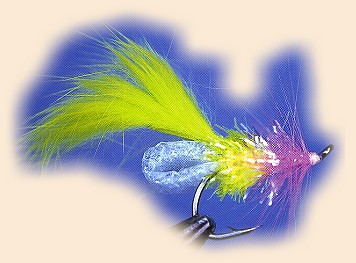|
Here I lay out a fly that is not so much a pattern but a
way to solve a specific fishing problem, particularly for
bottom-hugging winter fish. You don't want your fly bouncing
off the rocks but drifting just above them, at the level of
the holding steelhead. So you want your fly to sink but not
like a stone because you want it to "float" underwater, with
the current.
To limit snap-ups, you want the hook point up, away from
the bottom, with the eye of the hook closest to the snags
- in other words, you want the fly to drift butt-up.
Steelhead drift fishermen accomplish this with a drift
hook, lead and a corkie. (A brightly colored, hollow ball
that rides on the leader, above the hook, to keep it off
the river bottom; some fly-flingers lock them onto the
leader with a toothpick, using them as strike indicators.)
Tying Tips
To get that upside-down attitude, you can tie in a short
rabbit strip and some folded-over packing foam as a tail.
Rabbit strip resists sinking, becoming neutrally bouyant,
and the trapped air in the foam further flips the fly.
(Use only a short bit of rabbit so the fish will get the
whole fly in its mouth.)
The tiny blades of plastic that radiate out from the
core of the Crystal Chenille show the sink rate and
help keep the fly flipped on its nose. The plastic
reflects light, attracting fish; the hackle undulates
and adds color, stirring fish to strike.
Variations
You can tie this fly in various color combos;
fluorescent chartreuse and hot pink appeal to steelhead
in a wide variety of water conditions. For a faster
sink rate you can tie in barbell eyes on the top of the
hook, up front, which will also flip the fly upside
down.
Particularly when used with nymphing tactics for
steelhead, where your fly is drifting close to rocks
and other snags, I believe you should tie the fly well,
but also quickly and cheaply. Use the best hook you
can find, but you can't afford to be emotionally
attached to a fly tht may last only one cast before you
lose it.
Part of the nymphing presentation is to go with a
driftfisherman's hook, a short-shank, reversed
vend style that helps defeat snags. And like
trouters, you can use a floating line with split
shot on the leader to fine-tune your dead-drift
presentation. And even though your fly is drifting
updide down, it will be the right way when a steelhead
bites it.
Materials for the Float Butt Winter Fly:
Hook: Short shank, heavy wire, sizes 1/0 to 4.
Thread: Black 3/0 Monocord
Tail:Closed-cell packing material: Zonker rabbit strip
Body: Rear, florescent chartreuse Estaz; from fluorescent pink
Estaz.
Hackle: Fluorescent pink.
Eyes: Optional, various weighted eyes.

1. Tie in foam folded over itself (makes two layers).
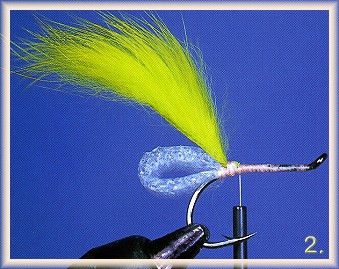
2. Tie in rabbit strip.
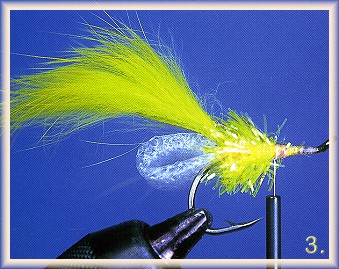
3. Tie in fluorescent chartreuse Estaz for rear half of
body, wrap forward, tie off, trim.
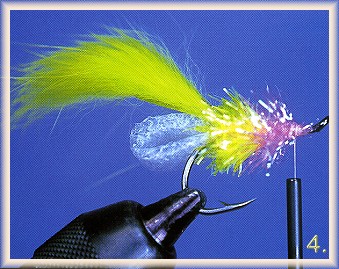
4. Tie in fluorescent pink Estaz for front half of body,
wrap forward, tie off, trim. (Leave room for front
hackle and head.)

5. Tie in fluorescent pink hackle.
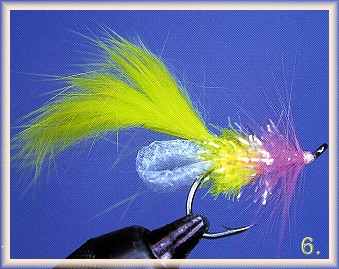
6. Wrap hackle, tie off, trim. Whip finish and cement. ~ ZM
Credit: The Float Butt Winter Fly is one of the
many great steelhead flies in Tying Steelhead Flies published
by Frank Amato Publications.
For more great flies, check out:
Beginning Fly Tying,
Intermediate Fly Tying and Advanced
Fly Tying.
|

